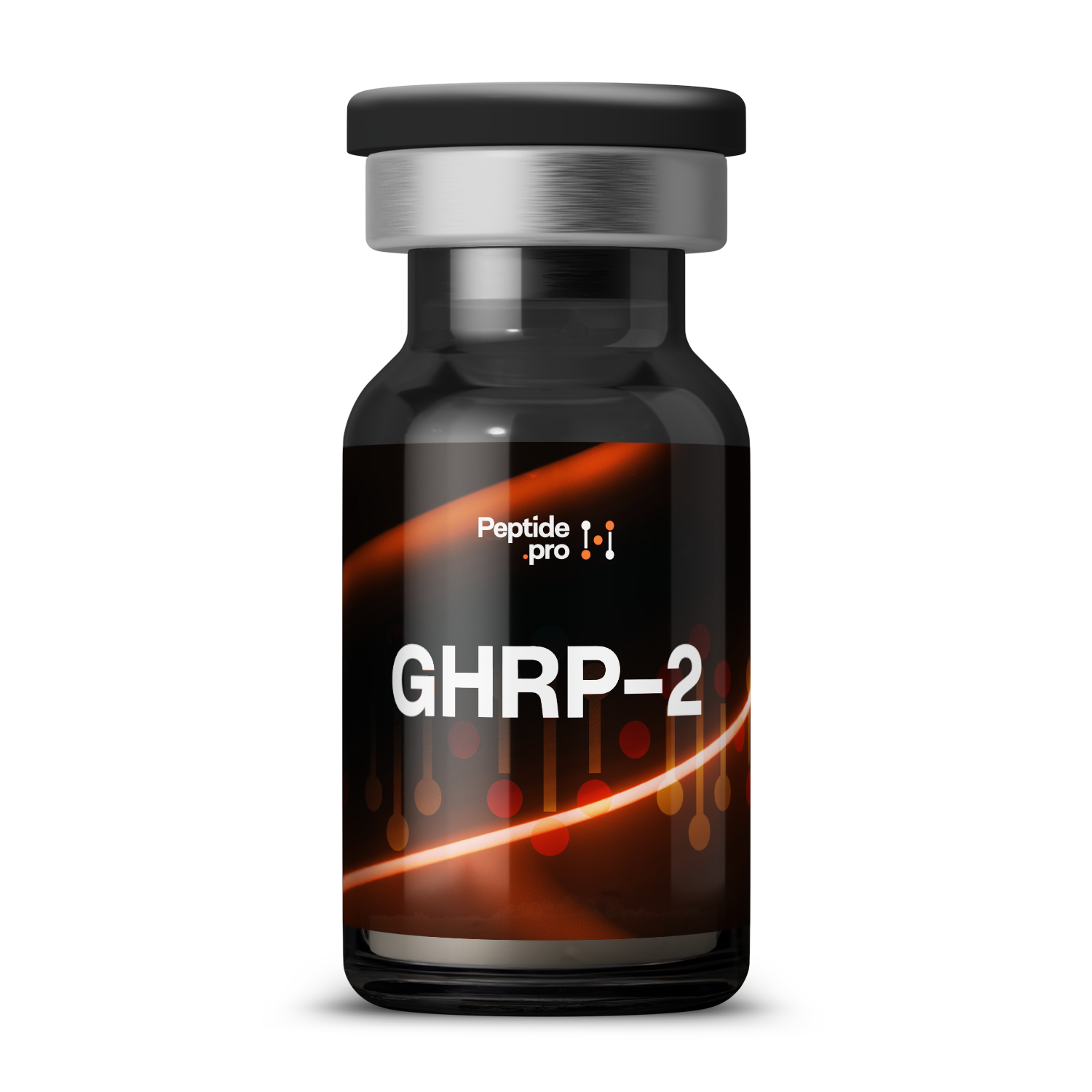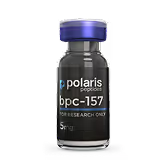GHRP-2
GHRP-2 is a six–amino-acid peptide that tells the pituitary gland to release natural growth hormone in quick pulses. When injected, it boosts GH levels to support muscle maintenance and metabolism without significantly affecting appetite or other hormones. It’s used in research on growth-hormone health and aging.
Compound Overview
About the product
GHRP-2 consists of six natural amino acids (D-Ala-D-β-Nal-Ala-Trp-D-Phe-Lys-NH₂) with no additional chemical modifications. It is synthesized by Fmoc solid-phase peptide methods and purified by preparative HPLC to exceed 95 percent purity. The C-terminal amidation increases stability in circulation. Identity and purity are confirmed by mass spectrometry.
GHRP-2 binds to the ghrelin receptor on pituitary somatotrophs and hypothalamic neurons, triggering release of GH-releasing hormone and direct GH secretion. It does not elevate cortisol or prolactin significantly in human subjects. The peptide enhances both the amplitude and frequency of GH pulses. Effects on GH release are observed within 30–60 minutes of subcutaneous administration.
The peptide has been evaluated primarily for its ability to boost natural GH levels. In clinical trials, GHRP-2 produced marked increases in serum GH and sustained IGF-1 elevations over baseline. Subjects exhibited improved markers of protein metabolism and lean-body-mass maintenance. Research continues on its potential in age-related decline and muscle-wasting conditions.
Reported adverse events in human studies include transient flushing and mild injection-site discomfort. No serious safety concerns or hormonal imbalances were documented in studies up to several weeks. Mild increases in appetite have been noted but are generally well tolerated. Long-term safety data beyond these trial durations are lacking.
GHRP-2 is assembled via Fmoc solid-phase peptide synthesis on a resin support. After cleavage, it is purified by preparative HPLC to >95 percent purity. Mass spectrometry verifies correct sequence and molecular weight. Production follows research-grade compounding standards.
GHRP-2 is classified for research use only and is not approved by major regulatory agencies such as the U.S. FDA or EMA. It cannot be prescribed or sold as a medical treatment. Laboratories obtain it under investigational peptide regulations, which vary by jurisdiction. No clinical or over-the-counter formulations exist.
GHRP-2 dosage in human studies has typically ranged from 100 to 300 µg, administered subcutaneously two to three times per day. Dosing schedules vary; common protocols involve injections 30 minutes before meals. No standardized guidelines exist outside research settings. All use should adhere to institutional review–board–approved designs.
- Do restrict use to IRB-approved research protocols with medical oversight.
- Do monitor serum GH and IGF-1 levels during treatment.
- Don’t combine with other GH secretagogues without justification.
- Don’t use during pregnancy, lactation, or in active malignancy.
- Q: How soon does GH increase?
- A: GH levels rise within 30–60 minutes after injection.
- Q: Does it affect cortisol or prolactin?
- A: No significant changes in cortisol or prolactin have been observed.
- Q: Is appetite stimulated?
- A: Mild appetite increases can occur but are usually transient.
For research use only. Not approved for medical use.


